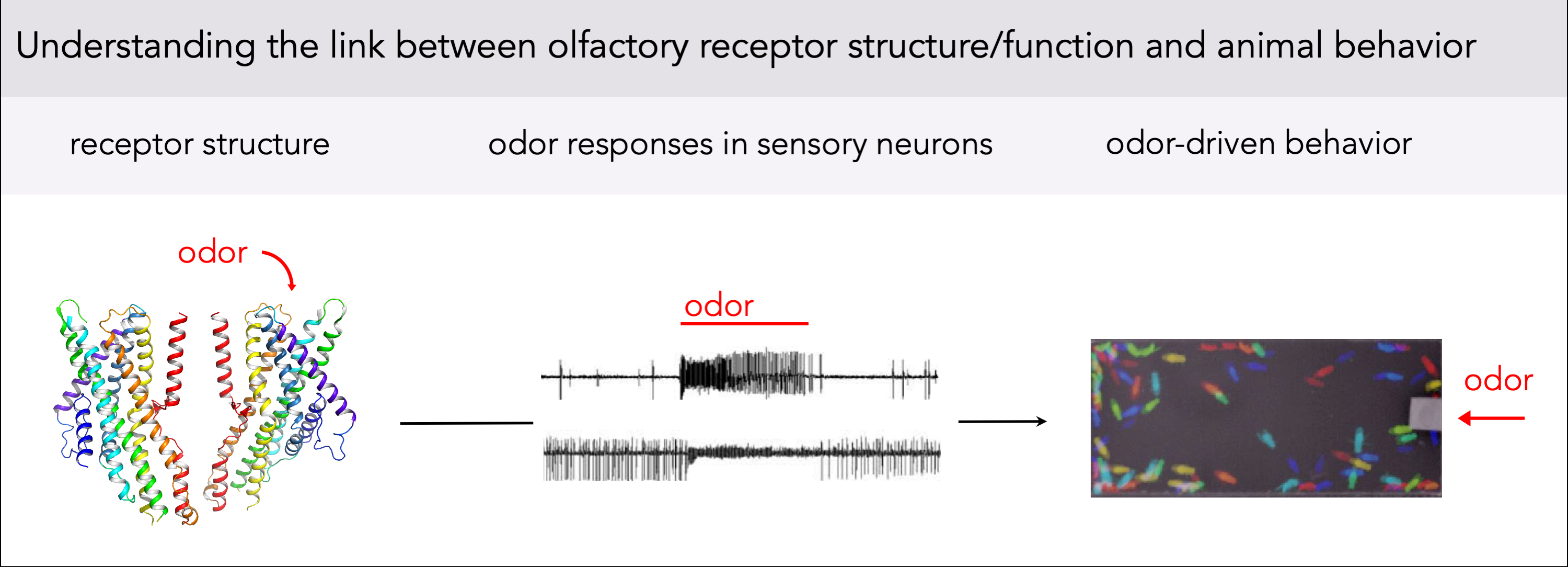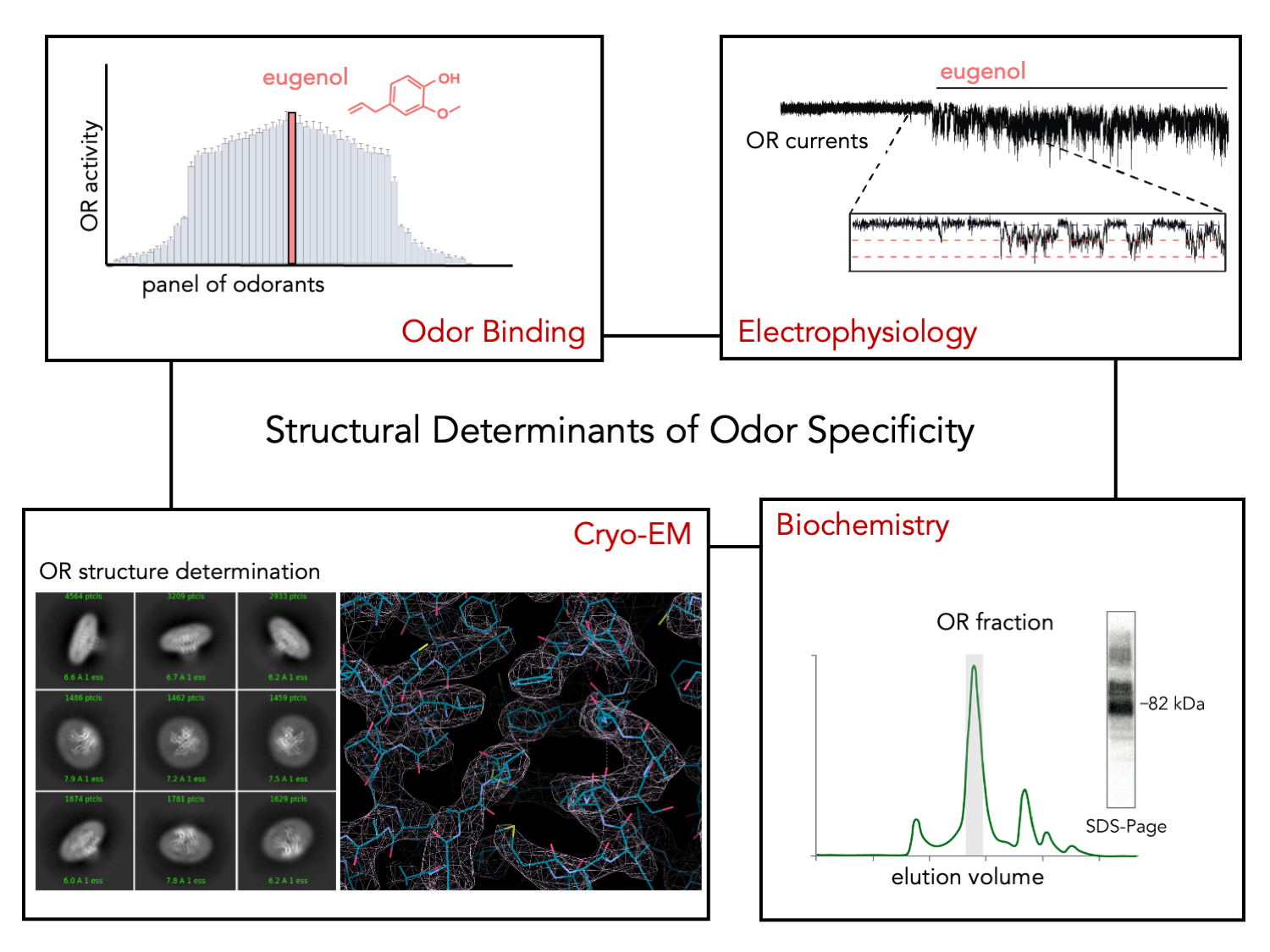
From a baby recognizing its mother’s scent to a mosquito locating its next bloodmeal, the sense of smell provides animals with vital information about their environment. At the molecular level, odors are composed of millions of widely diverse odorant compounds that animals must sense with only tens or hundreds of olfactory receptors (OR). How can this small number of receptors detect and discriminate the nearly infinite olfactory space? How do evolutionary forces act on the structure and function of olfactory receptors to enable species-specific olfactory preferences?
Our lab aims to achieve a comprehensive understanding of the molecular logic of olfaction, from the structural features that determine odor specificity to the evolutionary forces that shape olfactory-driven behavior. For this, we use cryo-electron microscopy (cryo-EM), electrophysiology, calcium imaging, computational modeling and behavioral experiments of olfactory preferences to elucidate the molecular mechanisms that allow animals to detect and discriminate the vast olfactory space.

Most of the millions of odorant compounds are small, hydrophobic molecules with relatively similar physicochemical features. Yet, olfactory receptors (ORs) exhibit precisely defined odor-specificity profiles: some ORs are exquisitely selective towards a single type of odorant molecule, but others are promiscuous and recognize dozens of distinct compounds. What are the structural features of ORs that determine their odor-specificity profile?
Our lab studies the structural and functional mechanisms that determine odor specificity of ORs from various animals. We use electrophysiology, biochemistry and calcium imaging assays to determine the odor binding properties of ORs, and cryoEM to solve their atomic structures both unliganded as well as bound to odor. These studies provide detailed mechanistic insight into how odor specificity is encoded within the structure of receptors, and how different protein families have evolved diverse structural strategies to achieve odor specificity.

Closely related insect species can adapt to diverse ecological niches by developing highly specialized olfactory preferences. In particular, many insects like mosquitoes and kissing bugs have specialized to feed on human blood. In order to hone in on humans, these insects rely on their olfactory system to detect the mixtures of odorants emitted by humans and discriminate them against odorants emitted by other animals. This human host-seeking behavior leads to the transmission of deadly diseases like malaria, dengue fever and Chagas disease, which take the lives of almost a million people every year. Despite the importance of developing novel strategies for vector control, the molecular mechanisms that allow insect vectors to prey on humans remain elusive.
We combine structural, functional and pharmacological studies of ORs with behavioral assays in insect vectors to (1) identify the ORs involved in detecting and discriminating animal odors, (2) understand the structural and functional determinants of odor specificity toward humans odors and (3) develop new drugs to target insect ORs in vivo.